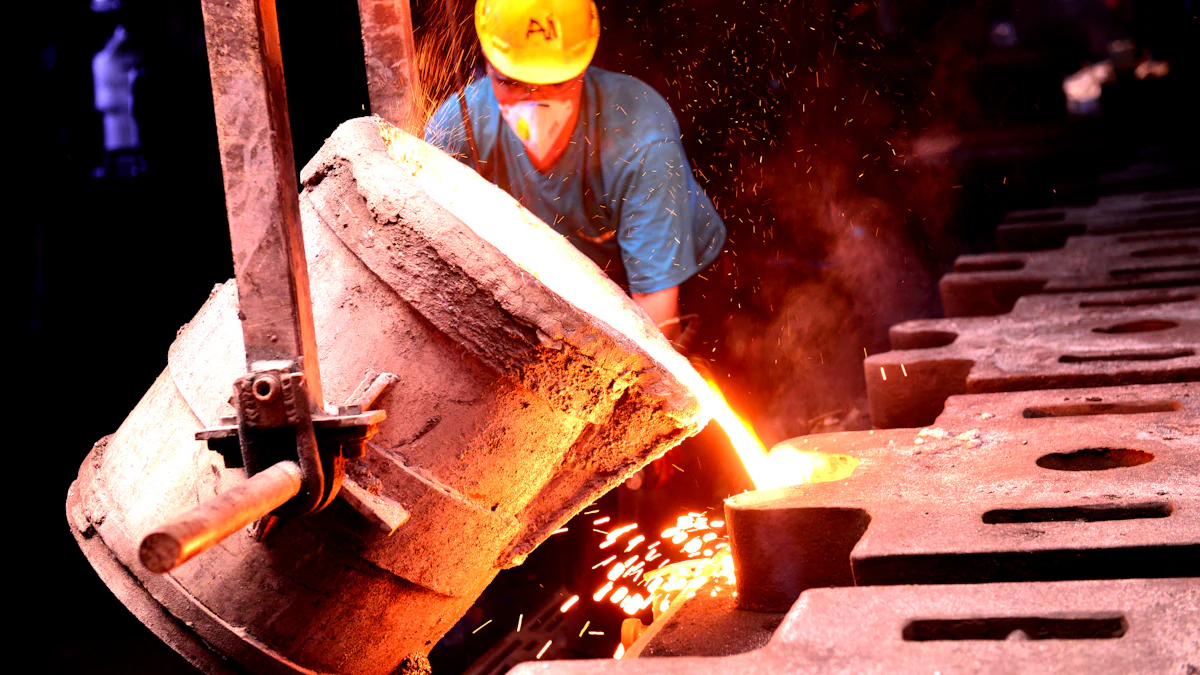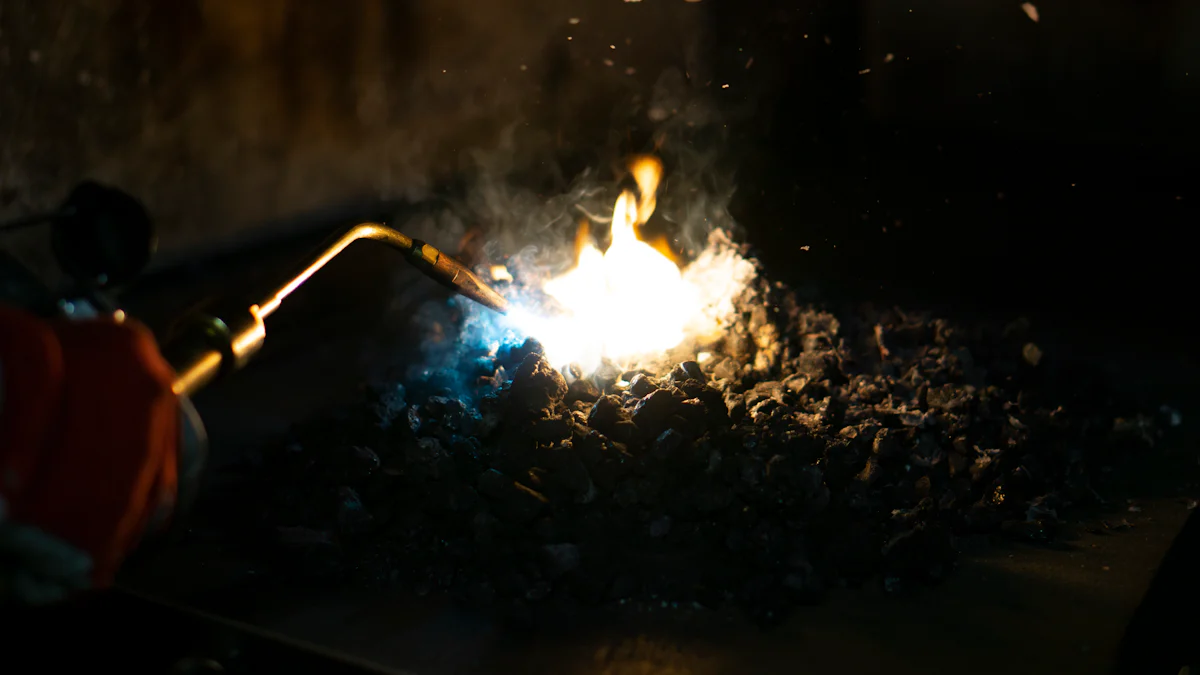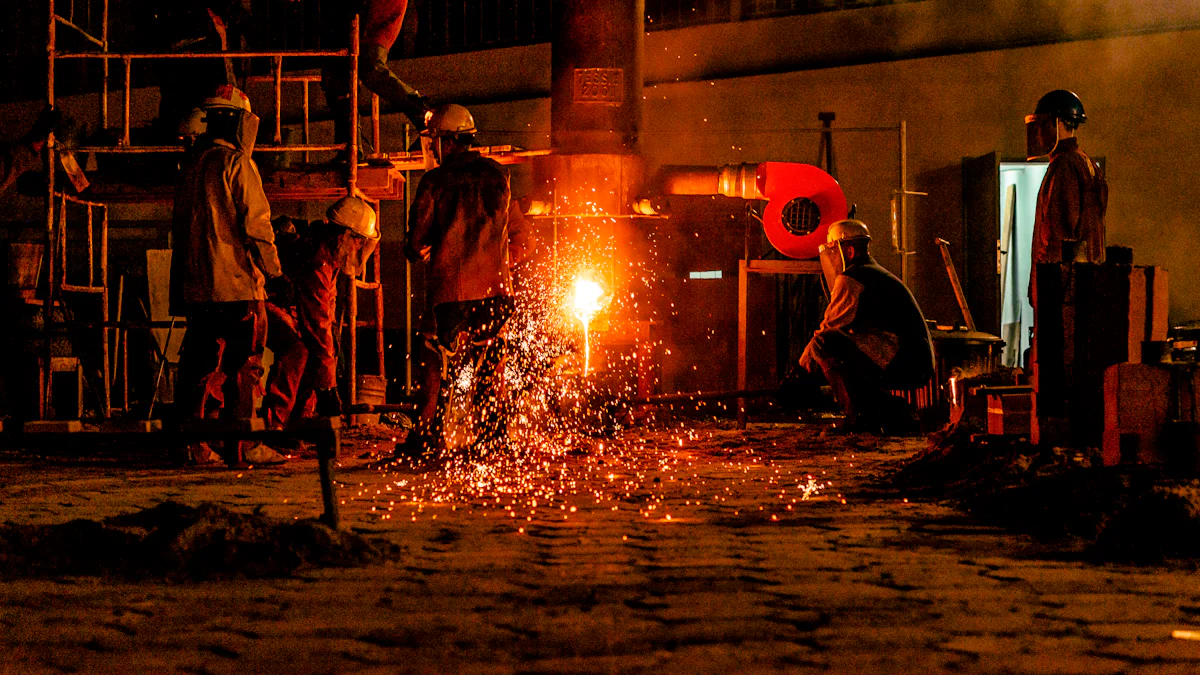
News

Induction heating uses electromagnetic fields to generate heat directly within metals. This method ensures precise and uniform melting, making it highly efficient. Industries increasingly adopt induction heater melting metal systems due to their energy savings of up to 50%. Portable Handheld Induction Heater models offer flexibility, while Intelligent Induction Heater systems enhance control and scalability.
Key Takeaways
Induction heating works well and uses less energy. It can save up to 50% compared to older methods, making it cheaper for businesses.
Setting up the induction heater correctly is very important. Change the power and frequency to match the metal type. This helps melt metal better and keeps the machine working longer.
Taking care of the machine is key for it to last. Check its parts often, look at coolant levels, and clean it to stop it from getting too hot.
Key Components of an Induction Heater for Melting Metal

Understanding the components of an induction heater is essential for achieving precision in metal melting. Each part plays a critical role in ensuring efficient and controlled heating.
Power Source
The power source supplies alternating current (AC) to the induction heater. This current generates the electromagnetic field required for heating. Different models of power sources cater to various applications. For example:
Higher power outputs are ideal for tasks requiring intense heat, while frequency adjustments allow you to control heating depth and efficiency.
Work Coil
The work coil generates the magnetic field that heats the metal. Its design significantly impacts the precision of the process. Common coil types include:
Helical wound coils, made of copper tubes, are simple and effective.
Precision-machined coils, brazed from solid copper, offer higher efficiency.
The coil's design affects not only the quality of the melted metal but also the overall process efficiency.
Tank Circuit
The tank circuit consists of a capacitor and an inductor. Together, they create a resonant circuit that determines the operating frequency of the induction heater. This frequency influences the skin effect, which controls how deeply the heat penetrates the metal. Proper tuning of the tank circuit ensures optimal energy transfer and melting efficiency.
Cooling System
Efficient cooling prevents overheating during prolonged use. Two common cooling systems include:
For high-power induction heater melting metal systems, water-cooled designs are more effective in maintaining performance.
How Induction Heating Achieves Precision in Metal Melting

How Induction Heating Works
Induction heating relies on electromagnetic principles to generate heat directly within the metal. A coil produces a magnetic field, which induces eddy currents in the metal. These currents raise the temperature of the material until it reaches its melting point. This process is highly efficient for both ferrous and non-ferrous metals. For example, steel melts at approximately 1370°C, while aluminum melts at much lower temperatures. The ability to control temperature precisely ensures consistent material properties and accurate alloy compositions.
Faraday’s law of electromagnetic induction forms the foundation of this process. It states that a changing magnetic field induces an electromotive force in a closed loop. This principle, combined with the skin effect, concentrates the heat near the surface of the metal, enabling rapid and efficient heating. This precision makes induction heating ideal for applications requiring uniform melting.
Role of Each Component in Precision Melting
Each component of an induction heater plays a vital role in achieving precision. The induction coil generates the magnetic field, and its design can be adjusted to suit different metals. The crucible, made of refractory material, holds the metal and withstands high temperatures. The power supply provides alternating current, which controls the intensity of the magnetic field. Together, these components ensure efficient and accurate melting.
Factors That Influence Melting Accuracy
Several factors affect the accuracy of induction heater melting metal systems:
Material Properties: The type of metal and its melting point play a significant role. Ferrous metals like steel require higher temperatures, while non-ferrous metals like aluminum melt at lower temperatures.
Induction Furnace Components: The design of the induction coil, the type of crucible, and the power supply settings all impact the efficiency and precision of the process.
Environmental Conditions: Factors such as ambient temperature and cooling system efficiency can influence the melting process.
By understanding these factors, you can optimize your induction heater setup to achieve consistent and precise results.
Best Practices for Using an Induction Heater
Proper Calibration of the System
Calibrating your induction heater ensures precise and efficient operation. Start by setting the correct power and frequency based on the type of metal you are melting. For example, ferrous metals like steel require higher frequencies, while non-ferrous metals like aluminum need lower settings. Adjust the work coil to match the size and shape of the metal. Misaligned coils can lead to uneven heating or energy loss. Use the manufacturer's guidelines to fine-tune the system for optimal performance. Regular calibration not only improves precision but also extends the lifespan of your equipment.
Safety Measures During Operation
Operating an induction heater requires strict safety protocols. Always wear protective gear, including heat-resistant gloves and safety goggles, to shield yourself from high temperatures and molten metal. Keep flammable materials away from the workspace to prevent accidents. Ensure the cooling system is functioning properly to avoid overheating. Install emergency shut-off switches for quick response in case of a malfunction. By following these measures, you can create a safe environment while using the induction heater.
Maintenance Tips for Long-Term Efficiency
Routine maintenance keeps your induction heater melting metal efficiently. Develop a preventive maintenance schedule based on the manufacturer's recommendations. Regularly inspect components for wear and replace them as needed. Clean the machine and surrounding area to prevent dust buildup, which can affect performance. Check coolant levels frequently and top them up to avoid overheating. Lubricate moving parts to reduce friction and ensure smooth operation. Keep detailed records of all maintenance activities to track the machine's condition over time.
Regularly check coolant levels and replace them if necessary. Insufficient coolant can lead to overheating, reducing the machine's efficiency and lifespan.
By following these practices, you can maintain the reliability and performance of your induction heater for years to come.
Induction heating offers unmatched precision and energy efficiency for metal melting. It minimizes energy waste by heating only the metal, reducing costs and boosting efficiency. Industries like automotive, aerospace, and manufacturing benefit from its clean, rapid, and precise melting capabilities. By mastering its components and practices, you can achieve consistent, high-quality results.
FAQ
What types of metals can you melt using induction heating?
You can melt ferrous metals like steel and iron, as well as non-ferrous metals such as aluminum, copper, and brass. Each requires specific temperature settings.
How do you choose the right work coil for your application?
Select a coil based on the metal's size, shape, and melting requirements. Helical coils suit general tasks, while precision-machined coils improve efficiency for specialized applications.
Can induction heating damage the metal being melted?
No, induction heating minimizes damage by providing controlled, uniform heating. Proper calibration ensures the metal retains its properties and achieves consistent melting results.
Please give us a message